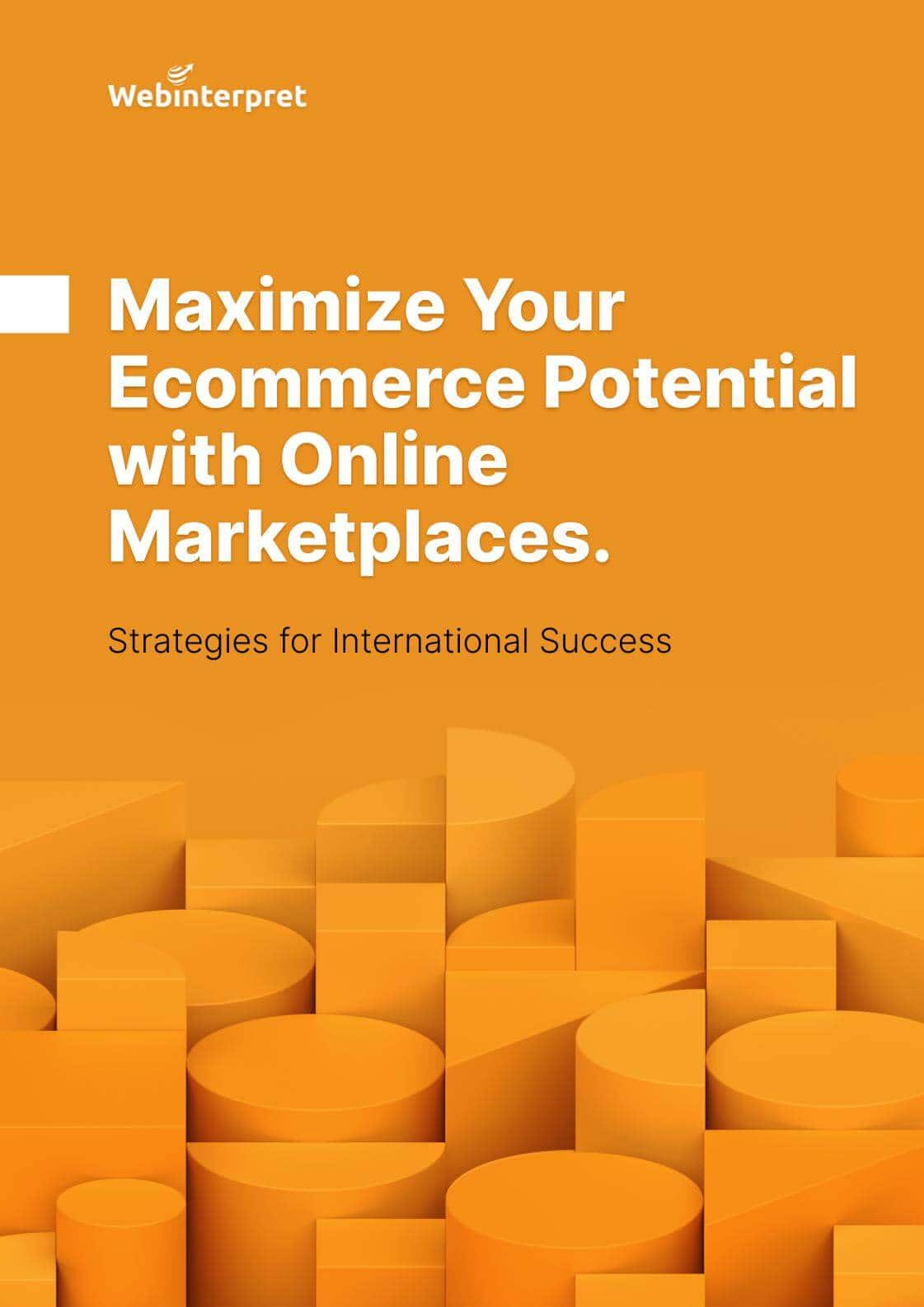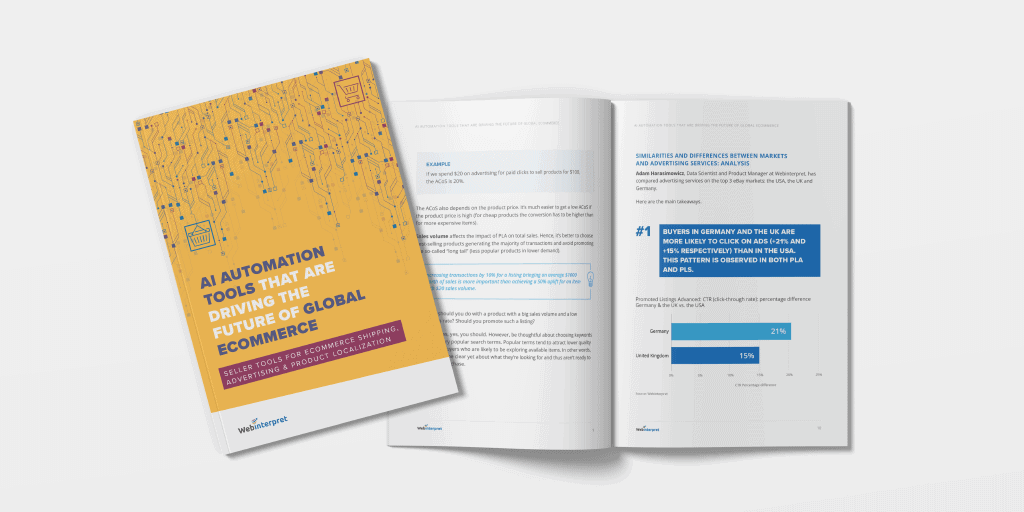
How to use storytelling to sell online
Have you ever wondered whether it’s possible to use storytelling to sell online?
In today’s competitive digital landscape, it’s crucial for sellers to stand out from the crowd and captivate their audience. Read our article to learn
- What storytelling is,
- How is storytelling connected to sales,
- How to unleash the power of storytelling on marketplaces.
When it comes to making an impression and closing sales, a compelling story can be a game-changer.
But…
Is it possible to use storytelling to sell online?
Before we dive into the benefits of storytelling on marketplaces, it’s important to understand what storytelling is and why it’s important.
What is storytelling?
Storytelling is the technique of conveying a narrative or a series of events in a compelling and engaging manner.
Through storytelling, individuals or brands can create a connection with their audience by evoking emotions, sharing experiences, and conveying messages in a memorable way. It involves the use of characters, plotlines, settings, and conflict to captivate readers and leave a lasting impact.
But why is storytelling so powerful?
- It helps to capture and hold people’s attention
- It creates an emotional connection with the audience
- It helps to make information more memorable
- It can be used to convey complex information in a more relatable and understandable way
Storytelling has the power to entertain, educate, and influence people by transporting them into different worlds, conveying important lessons, or driving action.
Let’s dive into the world of storytelling on marketplaces and discover its true potential.
Storytelling eBay experiment: Significant Objects
Storytelling can be useful in ecommerce because it can help sellers differentiate themselves, build trust and loyalty with customers, and ultimately drive sales by creating a more engaging and memorable shopping experience. After all, storytelling has the power to transform ordinary objects into extraordinary treasures.
This effect was confirmed with an experiment called Significant Objects. It was conducted in 2009 by two journalists, Rob Walker and Joshua Glenn. They wanted to investigate whether storytelling would have the power to turn seemingly worthless items into something desirable.
Walker and Glenn bought a total of one hundred various secondhand items with the intention of re-selling them online. Not for personal profit, but for the sake of the argument.
Among those random objects were things such as an ashtray, a paper fan, or a set of birthday candles, bought for ca. $1 each and worth practically nothing. Each item was then listed on eBay. Their descriptions were replaced with short stories prepared by contributing writers. In the end, they were auctioned off for nearly $8,000 in total.
The lesson learned from this experiment is clear: storytelling works on marketplaces. The vintage ashtray shown as an example in the picture above has increased its value by 3377% – all thanks to the power of personal narrative.
The benefits of storytelling on marketplaces
The Significant Objects experiments proved that there’s definitely potential in adding a personal touch and a narrative to your online sales tactics. What are some benefits of using storytelling for business?
Increased engagement
Telling a compelling story is an effective way to captivate the attention of customers and keep them engaged with your brand. When customers encounter an intriguing story that resonates with them, they are more likely to spend additional time exploring your listing and learning more about what you have to offer.
By evoking emotions such as joy, excitement, nostalgia, or empathy through your narrative, you can create a lasting impression that compels customers to take action.
Establishing brand identity
In the crowded marketplace landscape, where countless products and listings compete for attention, a well-crafted narrative can make your offering stand out. By incorporating storytelling into your listings, you can establish and reinforce a unique brand identity that will set you apart from your competition.
You can share the journey behind your products or services, the inspiration that drives your business, and the values that guide your decisions. A well-crafted brand story helps create a cohesive and consistent identity across all touchpoints, allowing customers to recognize and associate your brand with specific attributes or emotions.
Building trust
Storytelling has the remarkable ability to foster trust and connection with customers. By sharing your brand’s values and mission, you can show customers that you’re more than just a seller – you’re a business with a purpose.
By weaving narratives that highlight your brand’s core beliefs, you invite customers into your world, allowing them to see the heart and soul behind your products or services. This transparency and authenticity create a sense of trust, as customers feel a genuine connection and understanding of your business.
Using storytelling to enrich marketplace listings
Now that you understand the benefits of storytelling, let’s explore some ways to leverage storytelling techniques on marketplaces.
When it comes to enticing potential buyers, product descriptions play a pivotal role, and weaving narratives within them provides a natural and compelling way to captivate their attention.
We prepared a couple of easy tips to show you how to effectively use storytelling elements when creating your marketplace listings.
9 tips for using storytelling elements on marketplaces
Know your audience
To effectively tell a story, you need to understand your target market.
- Are you aware who you’re writing for? Who is your customer?
- What are their interests, needs, and pain points?
- What motivates them to make a purchase?
Tailor your messaging accordingly to resonate with your audience on a deeper level.
Know your brand
In order to accurately convey your story, you need to make sure you have a clear vision of your brand’s:
- Values
- Mission
- Vision
These three elements should form the foundation upon which your narrative is built and guide its direction.
Focus on benefits, not just features
Rather than just listing features and specifications, you should also communicate the benefits to the customer. You can weave a story around your product that will illustrate:
- What problem does your product solve?
- How will it make the customer’s life better?
- How does it fulfill a desire of your client?
Be personal
The power of storytelling can also lie in the language that you use. When we tell a story, we automatically use words like
- “I,”
- “We”
- “You”
These are personal pronouns that allow your customers to relate to what they’re reading more easily than if you were writing in a purely functional tone (for example: “Our product is designed for…”).
They allow clients to better imagine themselves using the product or experiencing its benefits firsthand.
Be authentic
Customers can see through fake or forced narratives, so make sure your story is genuine and true to your brand and its values.
Don’t try to force something that doesn’t feel true to your business. It could ultimately harm your brand’s reputation.
At the same time, don’t be afraid to:
- Use humor, if appropriate
- Show off your brand’s personality
Try to be concise
While storytelling is important, it’s also important to keep it short and sweet. Customers don’t want to read a novel when they’re browsing marketplace listings.
Attention spans are quite short in ecommerce. Keep your story engaging, easy to digest, and make sure it’s not too long or overwhelming. Avoid unnecessary details that distract from the main message.
Share customer stories
Share customer testimonials to add credibility to your story. You can show how your products fit into your clients’ lives and by doing so, you’ll make them more relatable and desirable.
Customer stories are a powerful tool for showcasing the real-life impact of your products or services. When sharing testimonials from satisfied customers remember to highlight the positive experiences and outcomes your products provided.
Complement stories with visuals
Use visuals that will:
- Help illustrate your story
- Enhance the narrative
- Help customers better connect with the feelings you are trying to convey
Pay close attention to the general mood, style, and colors of the images you choose.
Incorporate keywords into the story
While the main focus of storytelling is to engage customers on an emotional level, it’s also important to incorporate relevant keywords into your narrative. This can help your listings appear in search results and increase their visibility.
[FREE Download: AI Seller Tools]
Marketplace storytelling examples
We wanted to show you a few examples of how storytelling techniques can be used to create an emotional connection with customers, highlight brand values, and reinforce the features of a product.
To illustrate it, we chose the automotive parts category. It might seem like not the most obviously “story-friendly” category of products, and yet there are still easy ways to use storytelling to make them more engaging and compelling.
Take a look at two examples of how storytelling could be incorporated into a marketplace listing for car parts.
Storytelling example #1
You know that feeling when you’re on the track, pushing your car to its limits and chasing that elusive victory? We do too. That’s why we’ve created the ultimate high-performance spark plugs for your engine. Our plugs are designed to deliver maximum power and reliability, so you can focus on driving with confidence. And never look back.
Our team of engineers and mechanics have poured their hearts into designing and testing these plugs, pushing the limits of what’s possible and perfecting every detail. When you buy our spark plugs, you’re not just getting a product – you’re getting a piece of our team’s passion and dedication to the sport.
So if you’re ready to take your care racing to the next level, choose our high-performance spark plugs. Try them out and feel the difference for yourself.
- This description uses storytelling to create a sense of excitement and passion around the product.
- By framing the spark plugs as part of a larger story about racing and competition, the description makes them more than just a functional car part – they become an integral part of the racing experience.
- The story also highlights the expertise and dedication of the team behind the product, which can build trust and credibility with customers.
Storytelling example #2
Have you ever had to cancel plans with your family last minute because of a dead car battery? It’s a frustrating experience, not being able to take your beloved ones where they need to go.
But with our reliable car battery, you can avoid these situations altogether.
Our battery is designed to provide long-lasting, dependable power to your vehicle, so you can get your family where they need to go without any delays or interruptions. Whether you’re taking your kids to the doctor, running errands for your wife, or going on a family road trip, our car battery will keep you and your family on the go.
- This description uses storytelling to create a sense of reliability around the product.
- By framing the car battery as part of a larger story about family, the description makes it more than just a functional car part – it becomes a representation of family values.
- The story harnesses the feeling of belonging and having a larger purpose, which can build trust and credibility with customers.
Overall, both examples show how even seemingly mundane products like car parts can be made more engaging and compelling through the power of storytelling.
Is storytelling everything? A word of caution
Storytelling can do wonders in terms of boosting engagement on online marketplaces. But in order for storytelling to have a chance to work, a client must first land on the listing page.
If you want to try out the storytelling technique to increase your sales, first work on your marketplace listings’ visibility.
Use language that’s relevant not just for your audience but that will also help you rank higher on search engines.
Visibility determines how likely a particular product is to be found by a potential buyer. Product visibility on marketplaces is affected by the particularities of the search engine and the interface implemented by each platform. A clear example of this are the widespread search filters:

But optimizing your marketplace listings in terms of visibility is a separate task. You can tackle it on your own, or use an external solution to optimize big batches of listings in an automated and seamless way. Webinterpret’s solution aims at maximizing the number of attributes recommended by eBay in sellers’ product listings according to the marketplace specifications.
This is especially important in a steady or decreasing market, when each opportunity should be grabbed to make sure you stand out from your competitors.
Final thoughts
Storytelling has the ability to bridge the gap between buyers and sellers online. It can be a powerful tool for improving your marketplace listings by highlighting key selling points and creating vivid, memorable experiences for shoppers.
By understanding the benefits of storytelling, utilizing effective tips, and taking inspiration from successful storytelling cases, you can craft compelling product descriptions that will stand out from the competition.
But before you decide to use this strategy, make sure to focus on the standard elements of your marketplace listings to ensure that your customers can find your products.
Once they do, you will be able to use your personal narrative to build a strong brand identity that will resonate with them for a long time.

Learn how online marketplaces can help your ecommerce business succeed!
Related Posts:
Ecommerce Newsletter
By clicking the “Subscribe now” button, you agree to receive our monthly e-mail newsletter and regular marketing and commercial communications by email from Webinterpret regarding marketing trends and our digital marketing services. You confirm that you have read and agreed to Webinterpret’s Terms of Service and Privacy Policy.





